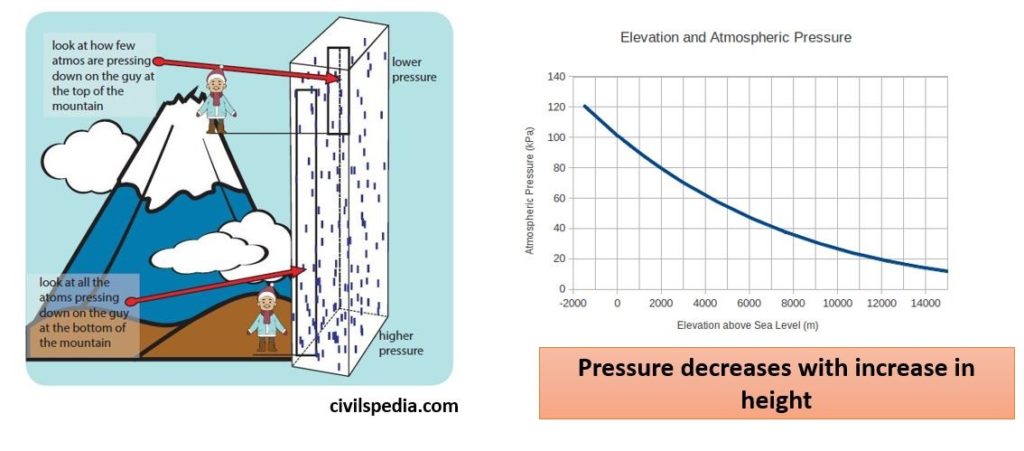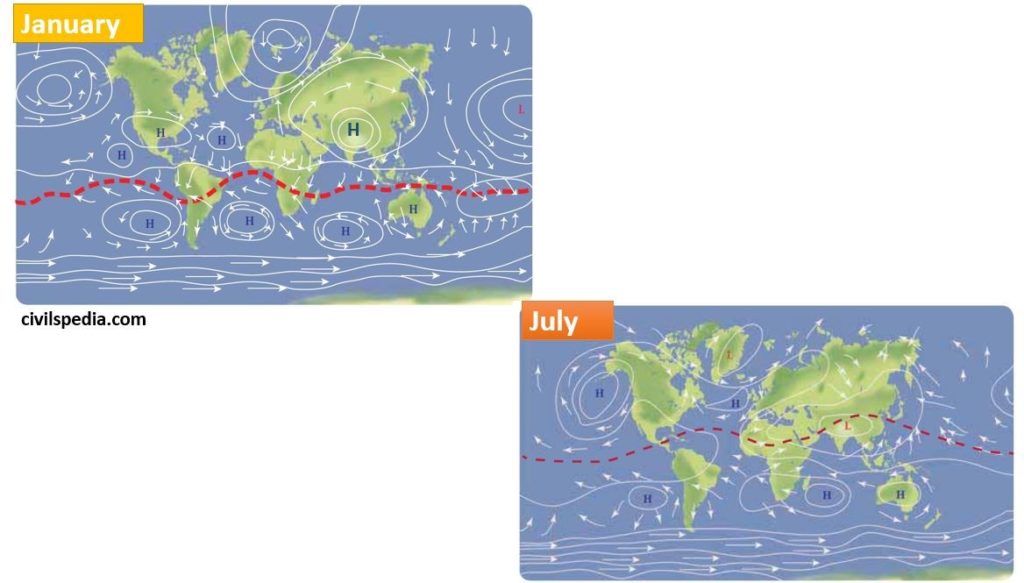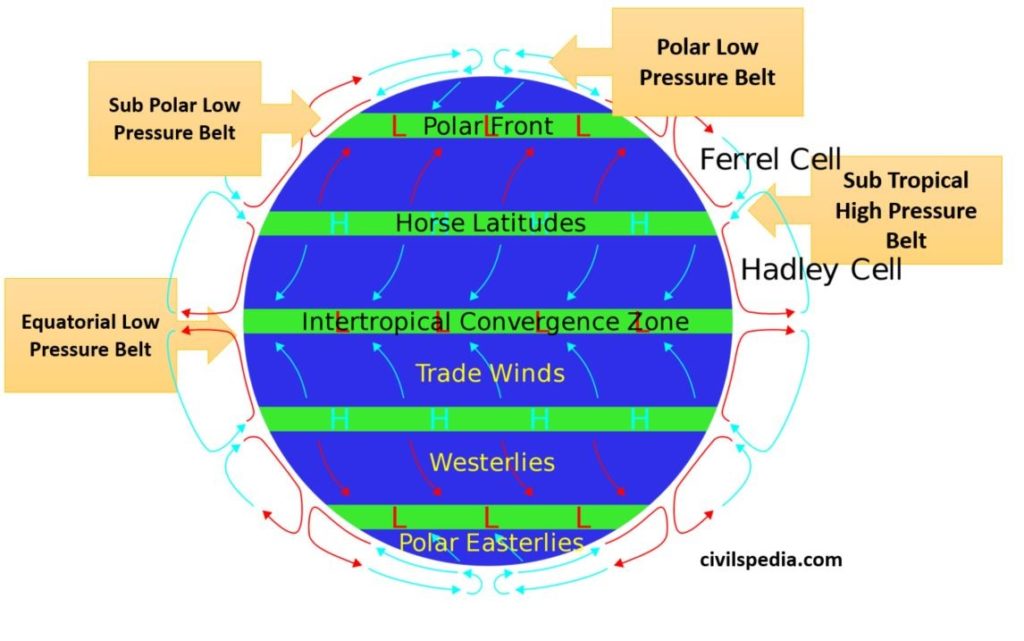Table of Contents
Pressure and Pressure Belts
This article deals with ‘Pressure and Pressure Belts’ This is part of our series on ‘Geography’ which is important pillar of GS-1 syllabus . For more articles , you can click here
Atmospheric Pressure
- Atmospheric pressure is defined as the force per unit area exerted against a surface by the weight of the air molecules above the earth surface.
- Atmospheric pressure is measured by an instrument called ‘Barometer’
- The atmospheric pressure is
not distributed uniformly over the earth. The amount of pressure increases or
decreases, according to the amount of molecules, that exerts the force on
the surface.
- When temperature of air increases, the air expands and reduces the number of molecules over unit area leading to reduction in pressure.
- Similarly, when the temperature falls, the air contracts and the pressure increase.

Factors affecting Atmospheric Pressure of area
1 . Temperature
- As the temperature increases, air expands because of which its density decreases resulting in low pressure over area.
- On the other hand, cold climate makes air denser resulting in high pressure over area.
- Equatorial regions have low pressure because of high temperatures. On the other hand Polar regions have high pressure due to low temperature.
2. Height from Sea
- The pressure at sea level is highest and keeps on decreasing rapidly with increasing altitude because of the progressive reduction of the mass above the point where it is measured.

3. Humidity
- Water vapours are light in weight therefore pressure of humid air is less compared to dry air.
4. Gravitation of Earth
- Atmosphere glues around the Earth due to its gravitation
- Due to shape of earth, Polar regions are nearer to core of the Earth as compared to Equatorial regions and hence have higher air pressure.
5. Rotation of Earth
- Rotation of Earth results in centrifugal force. Centrifugal force pushes things away from its core.
- Centrifugal force is highest over equator and zero over poles. Hence, air pressure will decrease in Equatorial regions as compared to that in polar regions.
Distribution of Atmospheric Pressure
Horizontal distribution of pressure is studied by drawing isobars . Isobars are lines connecting places having equal pressure. In order to eliminate the effect of altitude on pressure, it is measured at sea level. These distributions change with season as well.

Pressure Belts of Earth
Atmospheric pressure belts envelope on the surface of the earth. They are equatorial low pressure belt, sub tropical high pressure belts, sub polar low pressure belts and polar high pressure belts

1 . Equatorial Low Pressure Belt
- Region extending between 5° N latitude to 5° S
- Following are the reasons
creation of low pressure belt over this region :
- Rays of sun fall vertically => High temperature creates low pressure.
- Owing to high temperature, evaporation process is also very fast => large amount of water vapours decrease the weight and density of air resulting in reduction of air pressure.
- Rotation of Earth and resulting centrifugal force has its maximum magnitude on Equator
- When air moves upward , it leads to formation of clouds . Hence, it rains heavily in these areas (Cumulonimbus clouds & Convectional rainfall) . There is single season throughout the year ie high temperature & high rainfall .
- Advection is absent in this region because gradient of pressure is low . Hence known as Belt of Calm / Doldrum .
2. Sub-Tropical High Pressure Belt
- At about 30°N and 30°S latitudes on both sides of equator
- Air which rises in equatorial region begins to cool when it reaches higher altitude over equatorial region and flows towards the poles. This wind collides with the wind coming from the polar region at higher altitude and subsides down over sub tropical latitudes. This leads to formation of high pressure belt
- It is said that to avoid the slowing down of ship due to high pressure, the horses were thrown into the sea. So this belt is called as ‘Horse latitude’.
3. Sub Polar Low Pressure Belt
- These are low pressure belts found at 60°N and 60°S latitudes on both sides of equator
- The warm westerly wind from sub tropical region moves towards the pole and collide with the cold polar easterly wind from polar high pressure region and raises up to form sub polar low pressure belt.
4. Polar High Pressure Belt
- Region at poles on both sides of equator
- In this region, high pressure is formed because temperature remains low for whole of the year.
Side Note : Basis of formation of pressure belts
Pressure belts can be created because of two reasons
1 . Temperature / Thermally formed
- The Equatorial Low Pressure Belt and Polar High Pressure Belt are formed due to high and low temperature respectively. Hence, these are ‘thermally formed pressure belts’
2. Dynamically formed
- The Sub Tropical High and Sub Polar Low pressure belts are formed due to movement and collision of wind systems. Hence, they are called ‘Dynamically formed pressure belts’.
